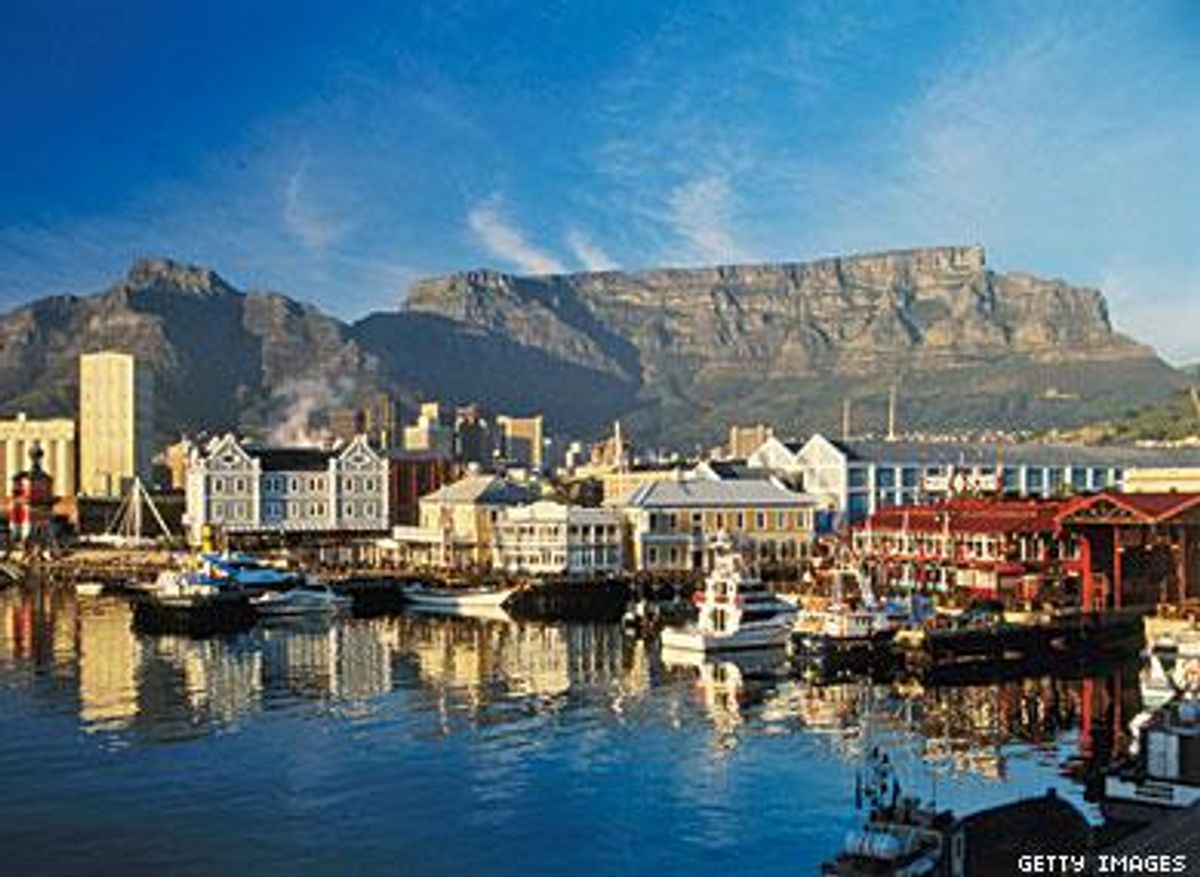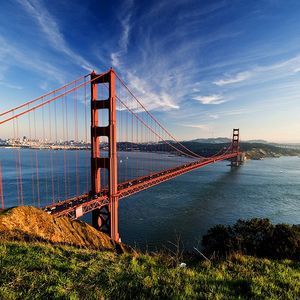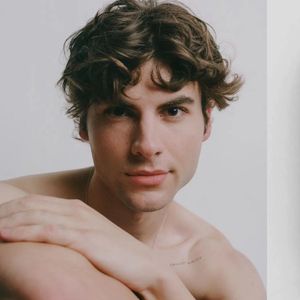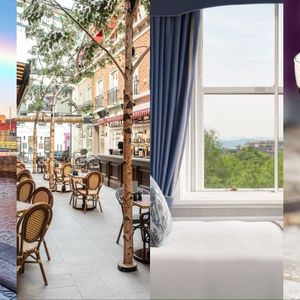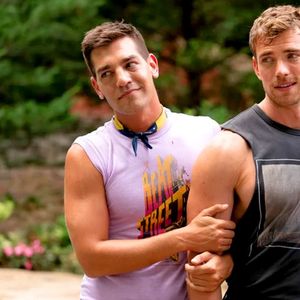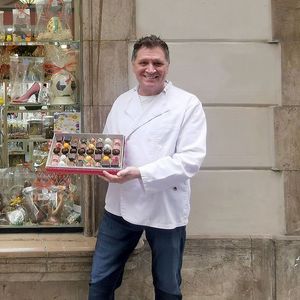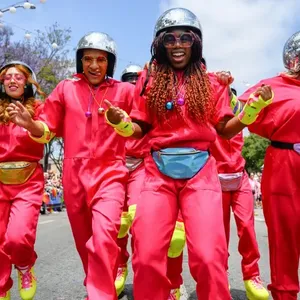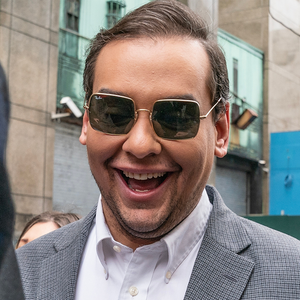All Rights reserved
By continuing to use our site, you agree to our Private Policy and Terms of Use.
When I arrived in South Africa, I was waiting in the Johannesburg airport for a connecting flight when suddenly, surrounded by police, Jacob Zuma, the president of South Africa, marched into the bright atrium. He was there to commemorate the opening of the new international terminal. Although I had never stepped foot on the continent, I was expecting big things, and already Africa was serving it up. If I were a smidge more narcissistic than I already am, I might have thought Zuma was there to welcome me.
Actually, for once in my life I was too busy to think about myself. It's a gorgeous country but not easily consumed. Beauty and conflict are intertwined here, and there's no way to make reductive assumptions because everything has been complicated with political implications, racial contradictions, and the entire country's chaotic past. I walked around bubbling over with questions, and then would go back to my room at night and Wikipedia everything.
In Knysna, I stayed at the swank Pezula Resort, located in the hills above the bayside town. About 400 miles east of Cape Town, this city of about 75,000 people was once a hippie outpost but has gradually evolved into a weekend destination for wealthy Capetonians. It has a similar feel to a Northern California town--but with the 1970s grooviness intermingled with boutiques and clean renovation jobs.
But like the rest of South Africa, Knysna isn't that easy to pin down. Pezula's attentive staff arranged an excursion with Emzini Tours to take me through a township--where South Africans below the poverty line have converged to create shantytowns that, over the years of racial oppression, apartheid, and recovery, have become distinct communities. Knysna's township was also in the hills above the bayside town, barely a mile or two away from the hotel.
Ella, a resident of the township, and Penny, originally from Zimbabwe--the founders and guides of Emzini Tours--drove me through the dirt roads crammed with houses made of nailed-together scraps of corrugated metal and wood. They introduced me to friendly residents; showed me the new, sturdier government-funded homes that were being built; and took me to the preschool, where kids sang the national anthem for me while my heart ached. After a couple of hours they drove me back to Pezula, where I was given a complimentary massage, perhaps for the cultural whiplash I'd just experienced.
It was late April, two months before the World Cup, and when I arrived in Cape Town there was a lot of construction as the city prepared for the crowds. Everywhere I looked there were workers banging things into place, like a scene in The Truman Show: new terminals, widened roads, sudden stadiums. The Grand Parade in city center had been paved and upgraded to become a "fan park," where crowds of up to 28,000 people could soon watch all 64 World Cup matches on large screens. Across from the refurbished fan plaza was City Hall, where Nelson Mandela gave his famous speech after being released from prison just 20 years earlier.
I saw examples of the "new," World Cup-inspired Cape Town everywhere. The Old Biscuit Mill--a well-designed, hip marketplace in the Woodstock section--is a cute grotto of shops and food stands where families and young hipsters hang out on the weekends. Here is where you can eat organic food and shop for mid-upscale merchandise: woven baskets at Third World for $25, a ceramic bowl with a blood-red interior at Miso Miso for $225, or a reclaimed door of stained glass at Green for $745.
Lucky for me, I was led around by Saleigh--a friendly, hugely knowledgeable tour guide with Jarat Tours who took me on a comprehensive three-day speed-through of the city and the outlying areas--from the wine country in Stellenbosch (where I visited the swank Delaire Graff estate), up the tram to Table Mountain (which has a new, impressive cafe on the top), and out to the windy, gorgeous tip of Cape Point, where the Atlantic and Indian oceans meet. All along the way we discussed Cape Town's deeply violent history (not like our country is so tame), recovery from apartheid, and promising but fragile future.
At my request, Saleigh drove me through the massive shantytowns in Cape Flats, located to the southeast of the central business district, hundreds of square miles bigger than the township in Knysna. People were living, essentially, outdoors--cooking, yelling, playing, drinking--the chaos of poverty. On the side of one street I saw some wizened doorframes for sale that looked much like the ones displayed at the Old Biscuit Mill. Some people weren't benefiting from the World Cup. Life is complicated.
One thing that doesn't seem so complicated: the gay scene. The grid of gay bars in De Waterkant (the gayish, fashiony section of town) have names like Manhattan and Crew--just like gay bars you find in Chelsea or Denver or wherever--unoriginal, with shaved bored-faced, balloon-muscled go-go boys dancing on the bar to that same damn Lady Gaga remix. Alison and I ate at Beefcakes, a gay restaurant with gay waiters and gay diner fare and a little stage with boas and hats in a box beside it. When our food came, students from the musical theater school nearby dropped in and started singing the sound track to Grease at the top of their lungs. It was like all the most annoying parts of Glee performed in front of you while you ate.
I am sure there is more to gay life here. Maybe if I stayed longer I would find some incredible creative crowd in Woodstock or meet a gorgeous surfer/wine merchant down at Sandy Bay, the gay nude beach. But instead, I was too busy taking everything in. It's like the entire country wanted me to get to know it first. But that's just me being narcissistic again.
Direct flights are available from New York's JFK on South African Airways. The trip is long (15-plus hours), but this airline makes it as elegant as possible.
Lodging
In Cape Town: Table Bay Hotel, HotelTablebBy.co.za
In Knysna: Pezula Resort, PezulaResortHotel.com
Exchange Rate
$1 = 7.5 South African rand (ZAR).
Regional Delicacy
The wines!
Gay Hood or Hangout
De Waterkant district; the nude beach at Sandy Bay.
Don't Miss This
Tour a township in Knysna, Emzini Tours, EmziniTours.co.za. Hike up to the old lighthouse at Cape Peninsula National Park.
Ultimate People-Watching Spot
Old Biscuit Mill, a collection of cool boutiques and a food market, where fashion hipsters hang out on the weekends.
Best Place to Splurge
Stellenbosch, where you can go rambling around the gorgeous vineyards from wine tasting to wine tasting, then head to the beautiful downtown area and shop for good, surprisingly cheapish leather.
Easiest Way to Land in the Hospital
Walking around at night alone. There aren't a lot of police here, and everyone will warn you to be careful at night. Take a cab and watch your back.
You Might Not Know
Knysna's Pink Lourie Festival, the annual sort of gay/drag/hippie event, is held at the beginning of May each year.
Help Getting Around
Ask for Saleigh at Jarat Tours, JaratTours.co.za.
Want more breaking equality news & trending entertainment stories?
Check out our NEW 24/7 streaming service: the Advocate Channel!
Download the Advocate Channel App for your mobile phone and your favorite streaming device!
From our Sponsors
Most Popular
Here Are Our 2024 Election Predictions. Will They Come True?
17 Celebs Who Are Out & Proud of Their Trans & Nonbinary Kids
Here Are the 15 Most LGBTQ-Friendly Cities in the U.S.
Which State Is the Queerest? These Are the States With the Most LGBTQ+ People
These 27 Senate Hearing Room Gay Sex Jokes Are Truly Exquisite
10 Cheeky and Homoerotic Photos From Bob Mizer's Nude Films
42 Flaming Hot Photos From 2024's Australian Firefighters Calendar
These Are the 5 States With the Smallest Percentage of LGBTQ+ People
Here are the 15 gayest travel destinations in the world: report
Trending Stories & News
For more news and videos on advocatechannel.com, click here.
Latest Stories
Supreme Court lets Idaho enforce law criminalizing gender-affirming care for minors


